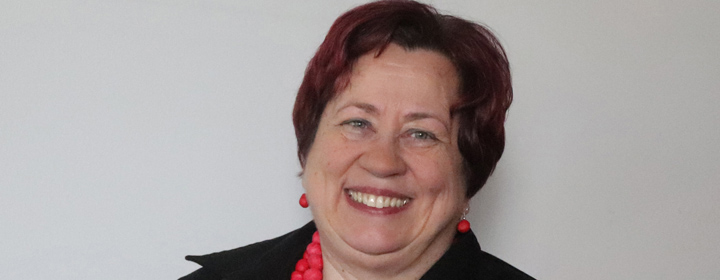
Saila Seppo: We need more research into the recycling of metals
To keep finding metals to meet our increased needs, we must have a circular economy and related research.
The consumption of metals plays a big part in our lives. We need to include troublesome metals, such as lead, in our recycling processes. Because metals are bound in each other’s structures, we cannot simply choose the best parts for recycling: we have to recycle all materials.
Earlier this autumn, Professor Markus Reuter from SMS Group in Germany gave a remote presentation at Foresight Thursday – The Future of Circular Economy in Cities, an event that was part of the new Critical Materials in Circular Economy of Cities Academy Programme. The presentation dealt with metals, focusing on how they occur together and on recycling. According to Reuter, there are no mobile phones or coffeemakers that can be recycled 100%, and a new car cannot be built using 100% of recycled material. We can reveal the reasons behind his statements through research.
As some metals become critical materials, research into the urban circular economy processes is crucial
Our everyday talk about the circular economy now revolves around rare earth metals, which were found only about a hundred years ago through chemistry and physics. The world of metals has changed rapidly. During the 1700s, in the time of waterwheels, windmills and white lead, we mainly needed lead, zinc, tin, iron and copper. During the 1800s, we used water turbines and industrial machinery and, in addition to the above, needed cobalt, manganese and calcium. In the 1900s, we again needed new metals such as platinum, wolfram, gold, vanadium, magnesium, molybdenum, silicon, titanium, aluminium, chromium and nickel for hydroelectric power plants, electric lights and titanium dioxide white.
In addition to all of the above, in the 2000s our solar cells, electric windmills, led lights and electric cars are creating demand for metals such as cadmium, ruthenium, palladium, iridium, rhodium, osmium, arsenic, zirconium, tantalum, niobium, cerium, gallium, germanium, indium, tellurium, silver, uranium, bismuth, potassium, antimony, lithium and rare earth metals. Of the metals mentioned above, the ones written in italic are critical materials according to Finland’s National Emergency Supply Agency.
The Agency has determined these metals as critical because their demand on the free market outstrips supply. While the need for many metals has increased almost exponentially in the 1900s, the world’s known mineral reserves are shrinking or located in politically or otherwise disputed territories.
We must have a circular economy of metals
The materials critical to our urban circular economy are the materials we need. But we could also say that the materials that we don’t want in our lives are critical too. Some metals are dangerous to people. These include lead, chromium and radioactive metals such as uranium. Although they are harmful to humans, other metals are attracted to them, and so they occur in compounds.
Replacing metals is difficult, as nature has given metals and their compounds properties that we need in our products. For example, titanium dioxide has a high refractive index, which makes it an unbeatable white pigment.
When one millionth of a foreign substance may contaminate a metal or its compound, recycling requires extreme precision. We expect our products to be of uniform quality and can easily see deviations caused by such a small pollutant. Products are often so complex that manufacturers cannot separate metals from them to the extent that the metals could be reused in similar products.
In the real world, recycling often involves unplanned events. Kemira’s titanium dioxide plant in Pori recycled water that contained sulphuric acid. I remember how the sodium content just kept increasing in the coagulation sludge for the end product. The sodium, which has good solubility, did not precipitate along the route but circulated in a loop with the acid water.
Recycling is complex. Pollutant amounts will increase cycle by cycle, as the amount of sodium did in the acid water. So, we must also determine how many times a product can be recycled.
“The recycling cycle cannot turn without certain branches of metallurgy,” Professor Reuter reminded us earlier this autumn. For example, banning lead or tin would have huge impact on the circular economy. Metals are bound up with each other, and to avoid nasty surprises in the recycling of metals, we need to understand metallurgy.
The Academy of Finland is launching a new Academy Programme: Critical Materials in Circular Economy of Cities. The Academy Board has earmarked a total of up to 8 million euros from the 2021 budget authority to fund research projects in the programme.
Read more: New Academy Programme on critical materials in the circular economy of cities